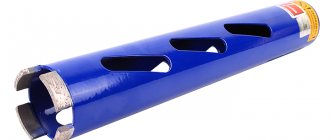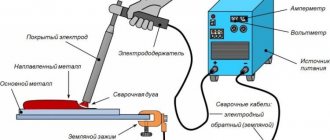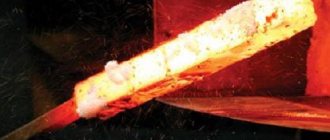The hammer drill is used both by professional builders and for home work. But even the best tool will not be able to cope with its task if the drill bit for the hammer drill is chosen incorrectly - without taking into account the surface material and its hardness. Most models are used to perform certain functions, but if you change the equipment, the hammer drill can easily serve as both a drill and a screwdriver. To replace attachments, a special cartridge is used - an adapter, which allows you to quickly change the functions of the device.
Drill and drill: what's the difference?
There are two main types of equipment for a rotary hammer. Drills are used in hammer drills. They make a hole with sharply sharpened ribs arranged in a spiral.
Drills of various diameters are used to pierce more durable foundations. Unlike simple rotational movements of the drill, this equipment also performs shock and vibration movements.
Drills are not suitable for use in a drill socket, and have their own design features:
- there is a landing shank at the end of the equipment,
- mounting grooves that fit only into the hammer drill socket,
- screw rod.
The latter feature allows the nozzle not only to make holes, but at the same time to remove the resulting debris out. The strength characteristics of the drill are added by a pobedite or diamond tip.
Drilling recommendations
Drilling concrete has its own characteristics and is very different from working with metal, wood or plastic. The reason for this is the heterogeneous composition of concrete. Thus, its structure contains mineral inclusions of various fractions, metal reinforcement and technical cavities.
When drilling concrete, you need to follow a few simple recommendations:
- Use drills or drill bits that are appropriate for the tool (drill or hammer drill). In order not to make mistakes, you need to use the instructions supplied with the tool or find its specification on the manufacturer’s website.
- To drill pure concrete, you need to use either drill bits with Pobedit cutters or drill bits for a rotary hammer (with the same Pobedit inserts).
- If you plan to drill ceramics or stone such as marble, then you need to use diamond-coated drills or core bits. You need to work at low speeds, take breaks to cool the working part (naturally - with air, without any liquids). In addition, you need to regularly remove crushed material from the hole using a construction vacuum cleaner.
- If you encounter a large stone in the thickness of concrete, you need to crush it using some kind of hammer and only then continue drilling.
- When drilling a hole in concrete, you need to take into account that its diameter 2-3 mm greater than the diameter of the drill. The reason for this is the inevitable beating and, accordingly, chipping of the hole walls.
- When using conventional drill bits in a drill, they should not make impact movements - this will damage their cutting part. This recommendation also applies to diamond-coated drills.
- Drill bits for concrete hammer drills and diamond-coated bits are distinguished by high hardness and at the same time brittleness. Therefore, they need to be drilled at medium speeds without overheating and under no circumstances should shock loads be allowed.
- In no case should you make holes or recesses using a hammer drill on the edge of walls or ceilings - this can lead to chipping of the surface (concrete, for all its hardness, is very fragile and in such places, impact loads can damage it uncontrollably)
Pobedite or diamond tip: which is better?
Which drills are best to choose are determined depending on what the surface being treated is made of. The rod of any equipment is crowned with a tip or solder. It has edges of various configurations and hard alloys are used for its manufacture.
The quality of drilling, wear resistance of the drill, and the speed at which it punches holes are determined by soldering. Therefore, it is better not to use a concrete drill bit for a hammer drill if you plan to work with marble tiles or masonry. But the diamond tip can handle both heavy and reinforced concrete.
Pobedit brazings are divided into three strength classes:
- soft ones are inexpensive, they can choose low-grade concrete and brickwork for the hole;
- medium-strength ones are most often used in everyday life for minor repairs and amateur construction. Tips of this hardness cope well with concrete floors;
- High-strength types of drills can compete with their diamond counterparts, but not on reinforced concrete bases.
All pobedit tips (if used as intended) are designed for repeated use without sharpening.
Useful tips
Some tips for handling drills from professionals:
- It is not advisable to use large-diameter drills for drilling bricks, since this can lead to its splitting, but if this is still necessary, then it is better to gradually increase the diameter;
- It is better to drill stone and ceramics using a drill setting, gradually adding water;
- When drilling reinforced concrete when sticking into reinforcement, it is necessary to change the drill to a drill of the appropriate diameter for metal and, having overcome this obstacle, continue to work with the drill;
- If the cutting edge is slightly worn down, you can sharpen it again, but it will not be possible to do this correctly right away, since this requires some experience;
- To the question “what are the best metal drills,” one can only say that good products require the use of expensive materials and technologies, so a priori they cannot be cheap. Read about step drills here.
Follow these tips and don't make mistakes!
What types of drills and drills are there?
If a home craftsman often needs to use a drilling tool, then it makes sense to look at sets of drills for a rotary hammer in the store. With such a purchase, the master will be ready to work with any surface.
The set contains nozzles with different types of shank and all shapes of the working part. Equipment can be divided into two broad categories: through and through.
The first ones choose the base material, gradually going deeper inside. The second type destroys (chips off, knocks off) an impressive part of the working surface. Within each group there is an additional breakdown into species.
It is not water that wears away stones
The main working part of any drill is the tip. It must be made of durable material that can withstand work under conditions of enormous loads and overheating, because its main task is to literally break the strong structure of the stone.
The vast majority of drills are tipped with an alloy of carbon-rich tungsten and cobalt. This alloy is popularly called Pobedit alloy. It has very high strength values and is capable of making holes in such durable rocks as granite and marble.
By the way, the same material is used to make tank armor-piercing shells.
Stronger and more durable cutting tool edges are made from synthetic diamond. This super-hard material guarantees trouble-free drilling into granite and reinforced concrete of the highest strength. However, the cost of such instruments will be higher than their Pobedit analogues.
Screw attachments
The category of the most used attachments is represented by auger drills. Their cutting edge is twisted into a spiral, and the tip is additionally hardened.
If you need to make a deep hole in a matter of seconds, these are the nozzles you use. They are purchased to hang a shelf, sconce or TV bracket.
Spiral drills
This type of consumable is indispensable when you need to make a long passage of large diameter. If you need to stretch a cable through load-bearing partitions from one room to another, choose a spiral drill.
Crowns
When working with concrete foundations, it is often necessary to use crowns. Such equipment is needed when laying electrical wiring and engineering systems.
To select a round hole of large diameter (for example, for a socket), purchase a spiral-shaped rod with an attachment. The crown has incisors along the edges, making it easy to penetrate into concrete.
How are drills marked and what sizes of nozzles are there?
Before inserting a drill into a hammer drill, you should make sure that you purchased a consumable with the type of shank recommended by the manufacturer (that is, all holes and shapes match the mount). Professionals advise choosing shanks with SDS fastening. It makes it possible to quickly change equipment and comes in 5 types:
- SDS plus is distinguished by the presence of 4 grooves with a diameter of 10 mm. The drills themselves can have a diameter of at least 0.4 cm and a maximum of 2.6 mm. They work great on concrete bases;
- SDS has 2 grooves, diameter 10mm;
- SDS max has five slots and is used for fastening powerful drills in rotary hammers for professional work. The diameter of the equipment increases from 2 to 8 cm;
- SDS top is distinguished by the presence of 4 grooves with a diameter of 1.4 cm. The size of the nozzles for this mount varies from 1.6 cm to 2.5 cm. This equipment is used in medium-weight hammer drills.
- The longitudinal projections in the SDS quick mount seem to have affected their popularity. They are rarely found on store shelves.
In addition to the type of fastening, the type of work to be done should influence the purchase of a particular consumable. Drill sizes for simple household work are limited to 6-10 mm.
Which polyurethane foam is better: tips on how to choose, review of characteristics, properties and features of modern foamsChoosing a blade for a hacksaw for metal: rating the best blades, choosing and using the best tool
Review of diamond bits for concrete: subtleties of choosing and using tools for high-quality drilling
If you need to screw an anchor bolt into the wall, you will need to take equipment of at least 2 and no more than 20 mm.
Another indicator of the drill size is the length of the working part and the main length. For private construction, where thick partitions are almost always erected, both a modest 10 cm nozzle and professional meter-long equipment may be required.
The walls in apartments are much thinner, and for standard repair work a 6 mm drill with a length of 110 mm will be sufficient.
To summarize, we can say that the choice of consumables for a hammer drill is made after assessing the scale and complexity of the upcoming work.
The best of the best
If we consider specific manufacturers, it is worth noting Bosch. This company produces the best tools chambered for SDS-max, of which it is the inventor. Among others, German DeWALT drills perform excellently, which are excellent for household and professional use.
If we consider drills for more specialized purposes, then Makita comes to mind. The flat drills from this company cannot be called the best, but the breaking ones show excellent performance even in harsh working conditions.
Among public sector employees, it is worth highlighting Elitech. The company makes excellent drills for home use. However, you should not rely on them when processing dense rocks.
Do not forget to lubricate the shank after purchasing the tool. It is advisable to use lubricant of the same brand as the drill. However, this is not critical.











